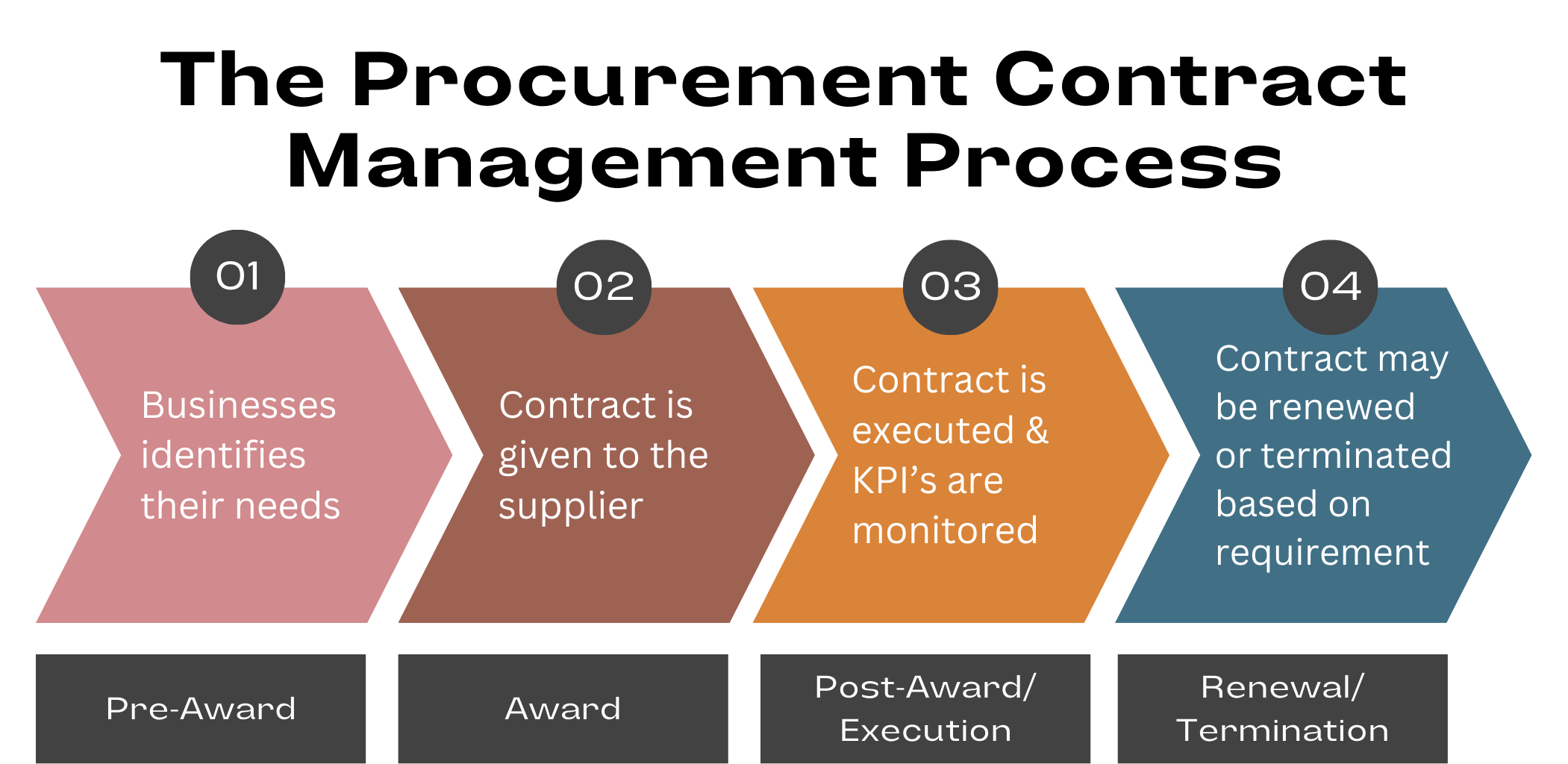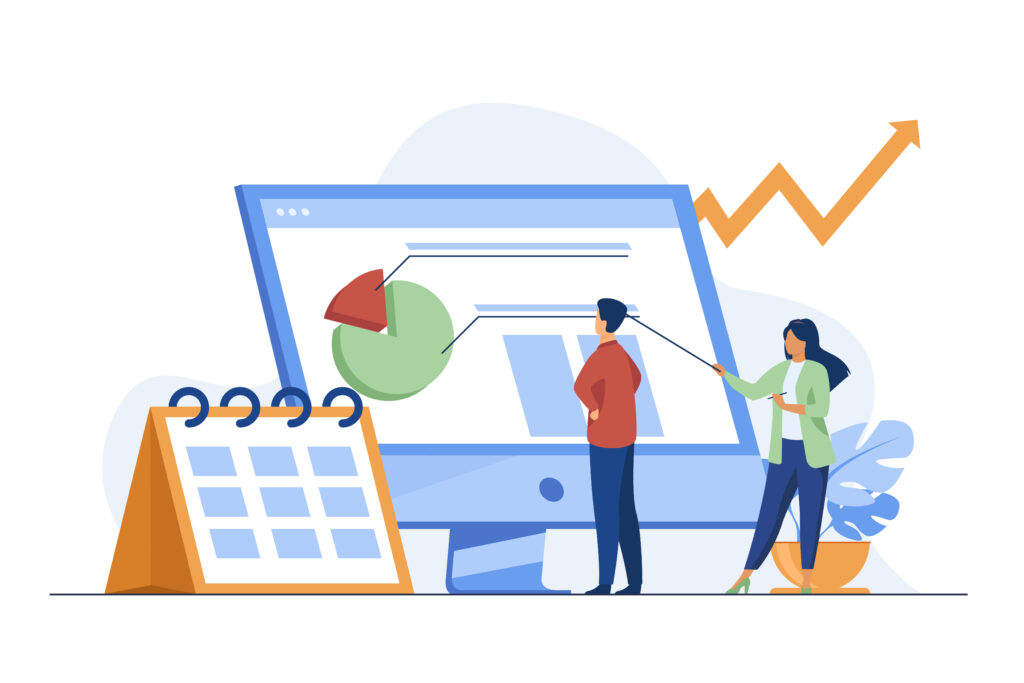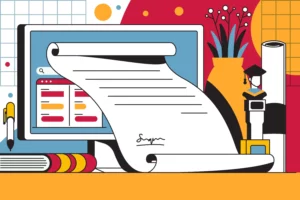Imagine you’re building a house. You wouldn’t start without a solid blueprint, right? The same goes for procurement contract management. Just like a well-planned blueprint guides every step of construction, a well-managed contract ensures that everything runs smoothly from start to finish.
Whether it’s negotiating terms, tracking performance, or renewing agreements, a structured approach to contract management in procurement helps businesses avoid pitfalls and build strong, lasting relationships with suppliers. In this article, we’ll explore the key stages of the procurement contract lifecycle and how a smart strategy can make all the difference in achieving success.
Understanding Contract Management in Procurement
Contract lifecycle management in procurement means managing contracts from start to finish. It includes every stage of a contract, such as drafting, negotiating, signing, monitoring, and renewing or ending contracts.
A structured approach helps procurement teams manage supplier agreements clearly and effectively. It ensures contracts are well-defined and properly executed. This approach also keeps supplier agreements aligned with the organization’s goals.
By staying organized, procurement teams can build stronger relationships with suppliers. Clear agreements create trust and transparency. This reduces the chances of disputes or misunderstandings. A solid process leads to better results and smoother collaboration.
The Role of Procurement in Contract Management

The Procurement Contract Management Process

Managing procurement contracts is an important part of sourcing and building strong supplier relationships. It involves a clear process for handling contracts at every stage. This includes creating, negotiating, signing, monitoring, renewing, and ending contracts.
The goal is to make sure all contracts support the company’s objectives and minimize risks. It also focuses on providing maximum value to both the company and its suppliers. A structured procurement contract management system helps streamline the procurement process. This approach improves compliance with contract terms and strengthens supplier relationships.
The contract lifecycle in procurement includes several key stages. These range from starting a contract to completing it. Each stage is crucial for ensuring contracts are effective and support a stable supply chain.
Here is a table that breaks down the main stages of the contract management process:
|
Stage |
Description |
|
Pre-Award |
In this stage, businesses identify their needs and define their requirements. They then request bids from suppliers. After that, suppliers are evaluated, and contract terms are negotiated. |
|
Award |
The contract is given to the selected supplier. All necessary approvals are also obtained at this point. |
|
Post-Award/Execution |
The contract is carried out, and its performance is closely monitored. Key performance indicators (KPIs) and service level agreements (SLAs) are used to track progress. |
|
Renewal/Termination |
In the final stage, the contract may be renewed with updated terms or terminated based on performance & business needs. |
By following a structured approach throughout these stages, organizations can ensure smooth contract execution, increased compliance, and more favorable outcomes.
Pre-Award Phase: Planning and Supplier Evaluation
The pre-award phase is key to setting up a successful contract. This phase focuses on planning and evaluating suppliers to reduce risks and choose the best vendor.
During this phase, the procurement team works with stakeholders to define the contract’s requirements and specifications. They also establish clear criteria to guide the selection process. The team looks for risks that could impact the contract, such as a supplier’s financial instability or their ability to meet demands.
The team thoroughly researches potential suppliers. They evaluate the supplier’s capabilities, experience, financial health, and compliance with relevant regulations. This ensures that the chosen supplier meets the organization’s needs and risk tolerance.
Post-Award Phase: Execution and Performance Monitoring
The post-award phase begins once the contract is signed. This phase focuses on managing the contract’s execution. It also involves monitoring supplier performance and ensuring contract terms are followed.
Tracking supplier performance regularly is important. You should check if suppliers meet delivery schedules, quality standards, and service level agreements. Set clear performance goals, review progress often, and keep communication open with suppliers.
If performance issues come up, address them quickly. Work together to find solutions and prevent disruptions. Document any contract violations and keep detailed records for future reference.
Related article: What is Contract Lifecycle Management? A Quick Overview
Overcoming Common Procurement Challenges

Dealing with procurement challenges can be tough. Companies need to address several issues to improve their processes. Managing risks is one of the most important factors. At the same time, businesses aim for cost savings.
Today’s business world is unpredictable, and organizations face many obstacles. Technology can help businesses overcome these challenges. It improves efficiency and simplifies processes.
Strong risk management strategies are also key. They help companies deal with uncertainties better. Building good relationships with suppliers is another important step. This improves collaboration and leads to better results.
By using these strategies together, businesses can tackle procurement challenges. They can unlock more efficiency, ensure compliance, and create more value.
Identifying and Addressing Procurement Risks
Procurement risks can seriously impact a company’s finances, reputation, and efficiency. These risks may arise from issues like supplier non-performance, price changes, contract problems, or supply chain disruptions.
To prevent these risks, companies need a strong risk management process. This process helps identify and reduce potential threats early. It involves setting clear criteria for assessing risks. Companies should also regularly check supplier performance and financial health.
Automated solutions make managing risks easier than manual methods. They improve data accuracy and provide better visibility into potential issues. By using technology, procurement teams can track contracts more effectively. This helps them address risks before they become serious problems.
Strategies for Supplier Evaluation and Selection
Choosing the right suppliers is key to achieving procurement goals and long-term success. It’s not just about price. A proper supplier evaluation needs a clear approach that looks beyond cost.
Organizations should set up a list of criteria for evaluating suppliers. This should include factors like supplier experience, financial health, and quality certifications. Risk management and sustainability goals are also important. A well-rounded evaluation ensures suppliers match the company’s procurement goals.
To build strong supplier relationships, businesses should have a Supplier Relationship Management (SRM) program. This includes clear communication and regular performance reviews. Giving constructive feedback helps suppliers improve and strengthens the relationship.
Related article: Essential Guide to Sales and Purchase Agreement
Best Practices for Enhancing Your Procurement Strategy

A strong procurement strategy helps control costs, manage risks, and build good relationships with suppliers. But to stay competitive, companies must keep improving.
By following industry best practices, companies can improve their contract management strategy. This boosts procurement performance and creates more value from supplier relationships. A proactive approach helps businesses adapt to market changes. It also supports long-term success in procurement.
Developing a Comprehensive Contract Management Strategy
A clear contract management strategy is essential for handling contracts from start to finish, including renewals or terminations. This strategy should align with the company’s goals and meet procurement needs.
Companies should create contract management teams. These teams manage each step of the contract lifecycle. They help design contract templates, lead negotiations, track performance, and ensure contracts are followed.
A centralized contract management system makes workflows more efficient. It improves teamwork and keeps data accurate. This technology lets teams track key milestones and set reminders for renewal dates. It also helps spot risks early, which can benefit the company’s bottom line.
Here are key steps to build a strong contract management strategy:
- Define Clear Roles and Responsibilities: Assign specific people or teams to handle each part of the contract process. This ensures accountability. Everyone knows what they need to do, making the process run smoothly.
- Standardize Contract Templates: Create templates for contracts that are used often. This ensures consistency and saves time. It also reduces the chance of mistakes.
- Implement a Contract Repository: Store all contracts in a secure, central location. This makes contracts easy to access. It also helps track versions and improves teamwork.
Related article: Contract Templates Standardization: Simplifying Your Work
The Impact of Technology on Contract Management

Technology has greatly changed how companies manage contracts. Contract lifecycle management software, often part of procurement software suites, offers a complete solution. It automates tasks, improves collaboration, and helps businesses get the most value from contracts. With these tools, companies can see contract data in real time.
This helps them track important milestones and spot risks early. It also ensures compliance with regulations. Digital transformation lets procurement teams improve contract performance. This reduces financial losses and strengthens relationships with suppliers.
Exploring Contract Management Software Solutions
Contract management software, or CLM software, helps businesses manage contracts more easily. It handles everything from creating and negotiating contracts to execution, monitoring, and renewal. These tools make contract management more efficient and effective.
When choosing the right CLM software, businesses should think about their specific needs. Consider factors like budget and required features. It’s important to look at ease of use, integration with current systems, scalability, and security. Vendor support is also a key factor.
A good CLM system has a central place for all contract-related documents. This makes contracts easier to access and reduces the chance of losing important files. It also helps improve collaboration between teams and stakeholders.
Related article: Legal and Procurement: Strategies for Successful Collaboration
How Software like Volody Transforms Procurement Processes

Software like Volody revolutionizes procurement processes by automating key tasks, ensuring efficiency and accuracy across the entire contract lifecycle. Here’s how it transforms procurement management:
- Centralized Repository: All contract information is stored in one place, making it easy for procurement managers and the legal team to access critical documents.
- Contract Creation & Development: Streamlined contract creation and development, reducing manual processes and ensuring contract compliance.
- Contract Renewal: Simplifies contract renewal, ensuring timely reviews and adherence to payment terms and key contract terms.
- Automated Approval Workflows: Speeds up approval workflows, involving the right people at the right time, including internal stakeholders and the legal team.
- Audit Trails: Provides clear audit trails to track contract changes, ensuring transparency and accountability.
- Vendor Management: Enhances vendor relationships by improving communication and monitoring performance metrics.
- Reduced Risk: Helps mitigate reputational damage and risks by ensuring compliance with the terms of the contract and reducing manual errors.
- Document Storage: Offers secure, accessible document storage for all procurement-related documentation, including purchase orders and supplier contracts.
By automating these key areas, Volody enables procurement departments to focus on strategic activities, improving efficiency and decision-making.
Related article: Top 10 Contract Management Software: Best CLM Tools in 2024
Conclusion
In conclusion, effective contract management in procurement is crucial for business success. Understanding the key stages of the procurement contract lifecycle is essential. By addressing common challenges and following best practices, organizations can improve their procurement strategies.
Technology plays a big role in this improvement. Tools like Volody can streamline contract management processes and boost efficiency. By using key performance indicators, businesses can measure their success and make improvements over time.
Prioritizing strong contract management practices will enhance your procurement strategy. This will help optimize processes and lead to better results for your business.
FAQs
What is the importance of contract management in procurement?
Contract management is crucial in procurement to maximize value. It streamlines operations, ensuring efficiency and compliance. It also helps reduce risks and build strong supplier relationships while saving costs.
How does technology enhance procurement contract management?
Technology, especially contract management software, improves procurement contract management. It automates tasks and provides better visibility into contract data. It also boosts collaboration and helps make better decisions.
What are the key stages of the procurement contract lifecycle?
The procurement contract lifecycle has several key stages: creation, negotiation, execution, performance monitoring, and renewal or termination. Each stage is essential for effective contract management.
How to overcome common procurement contracting issues?
Organizations can overcome procurement challenges by managing risks well. They should also evaluate suppliers thoroughly and streamline processes. Building positive relationships with suppliers is also important.





